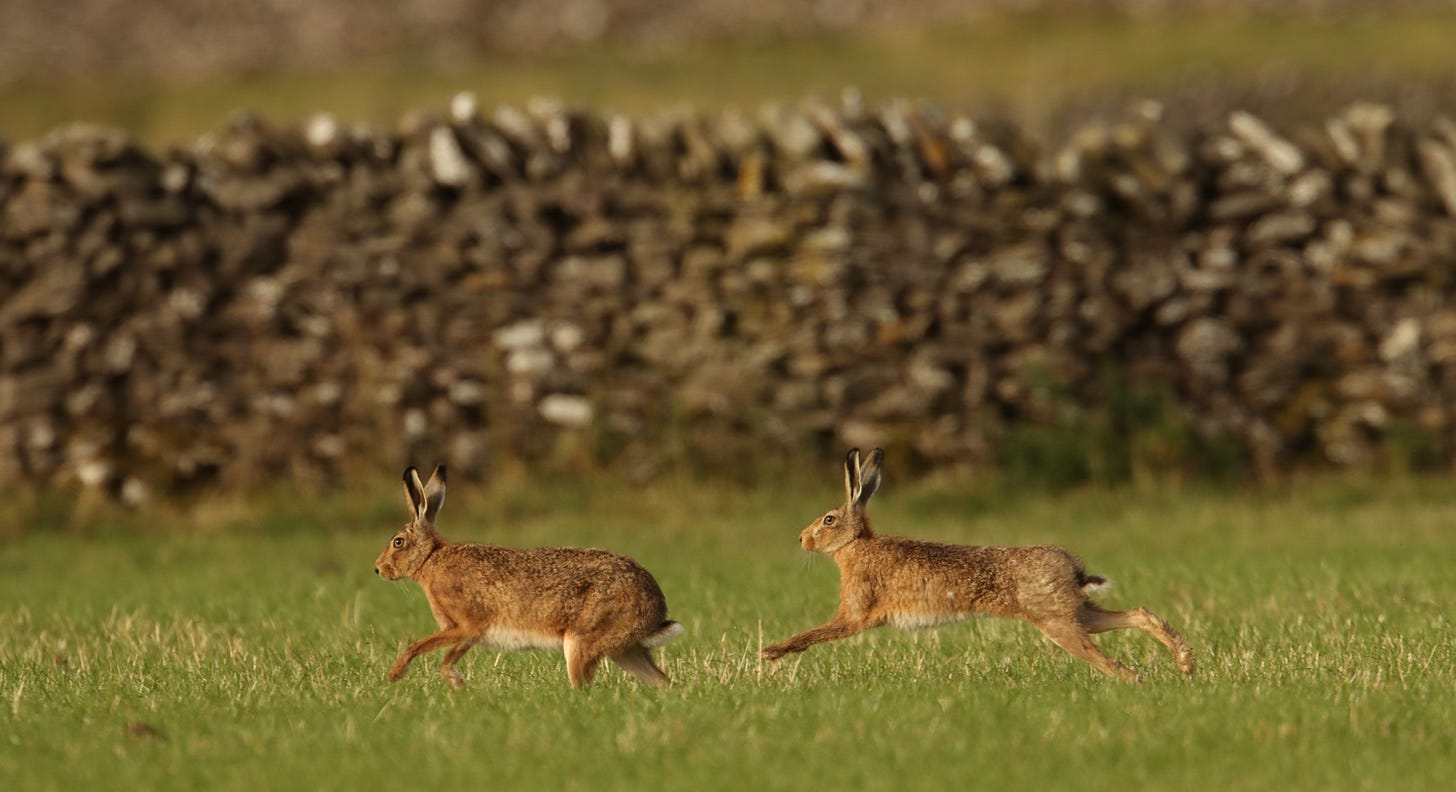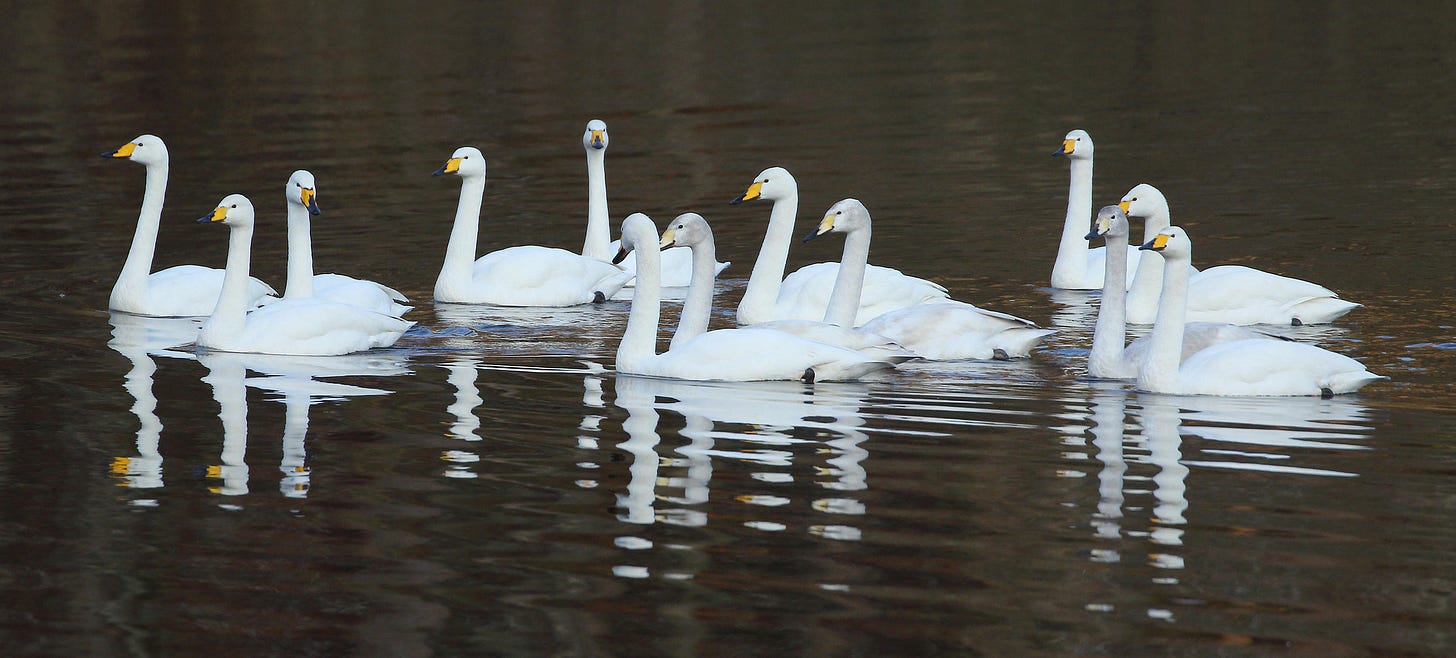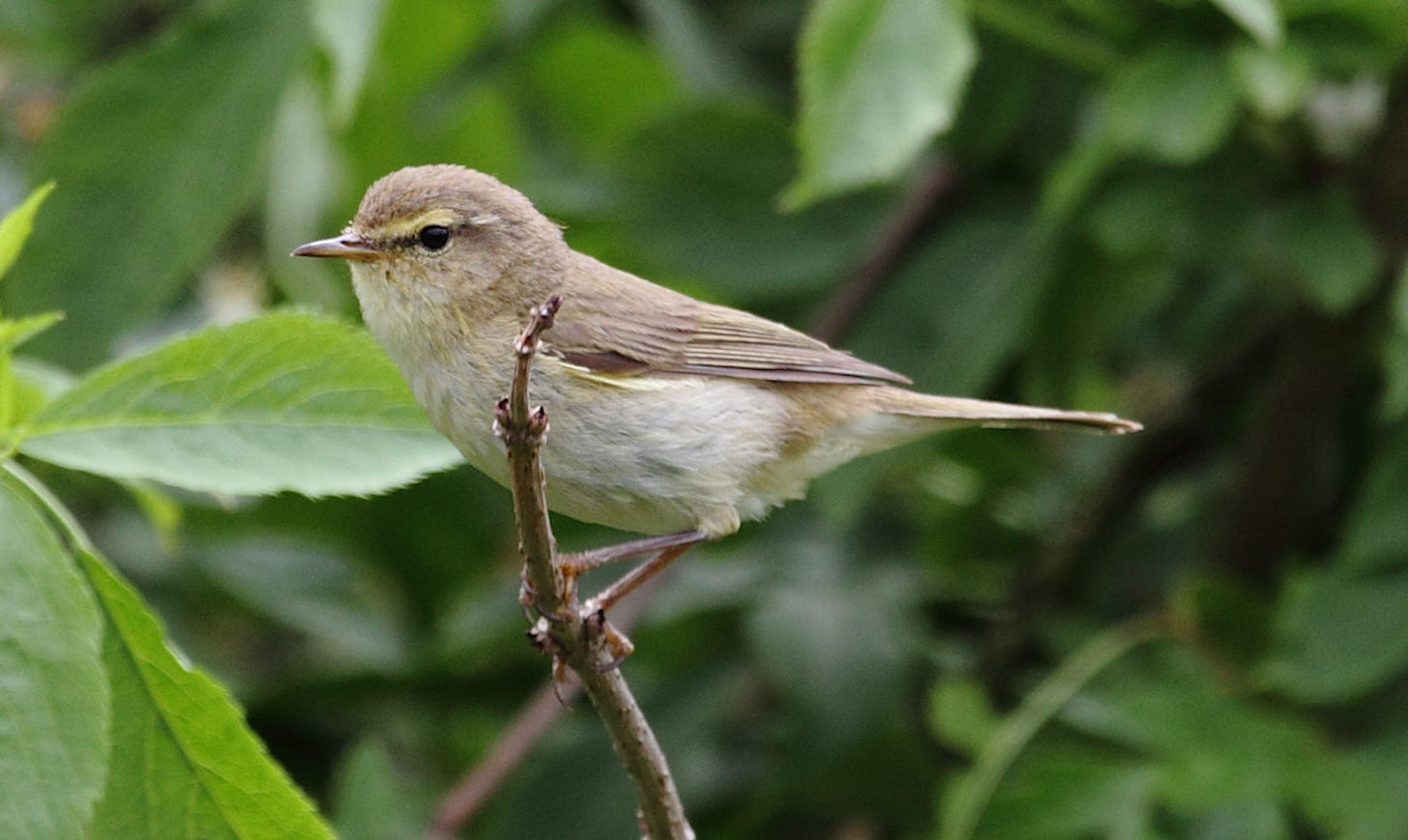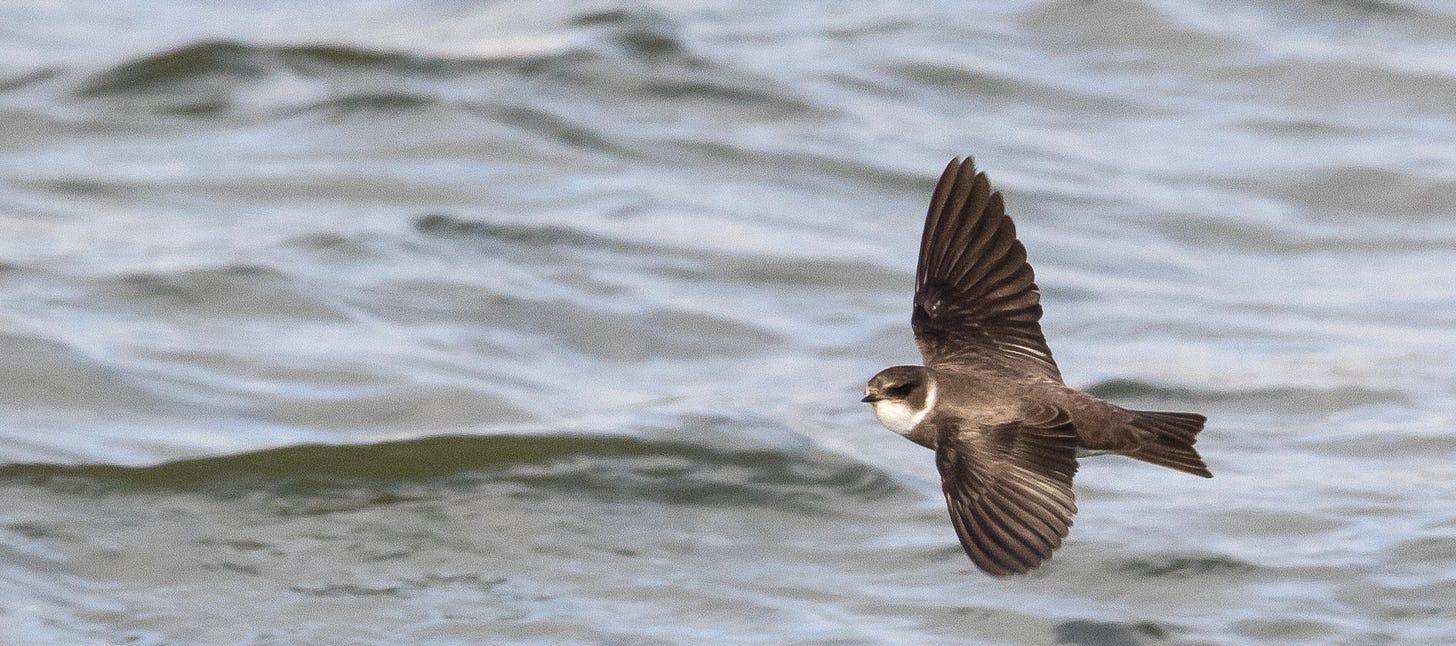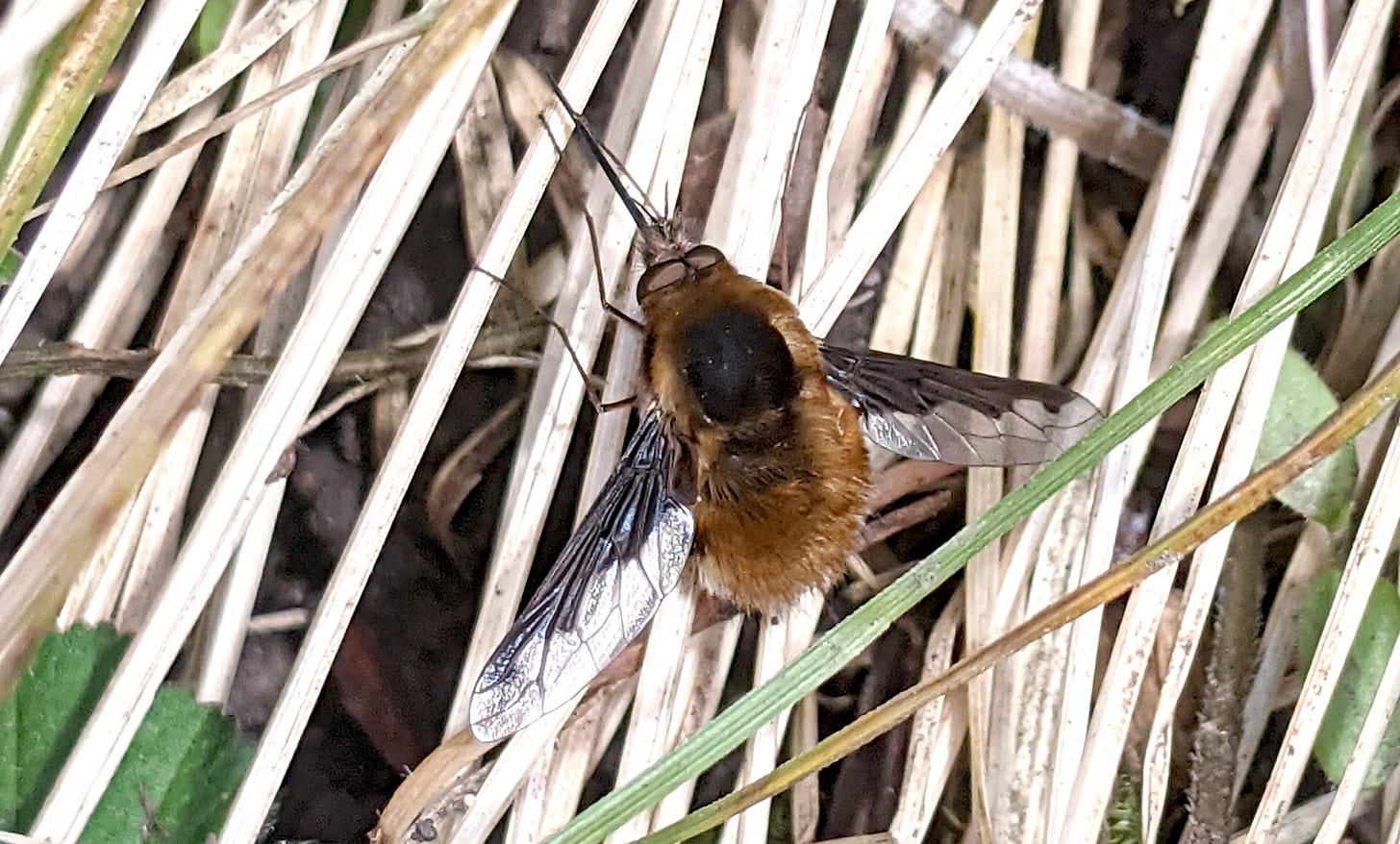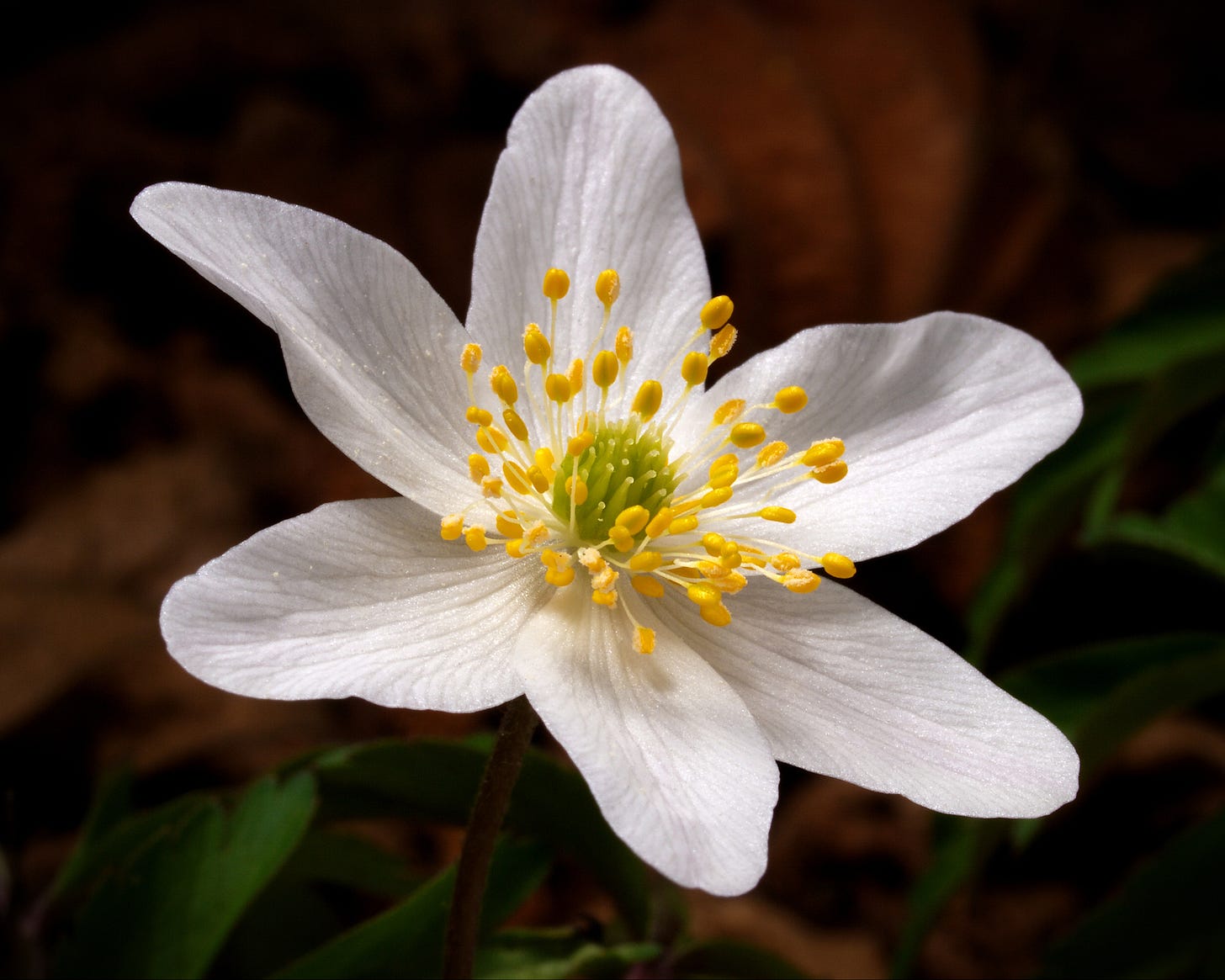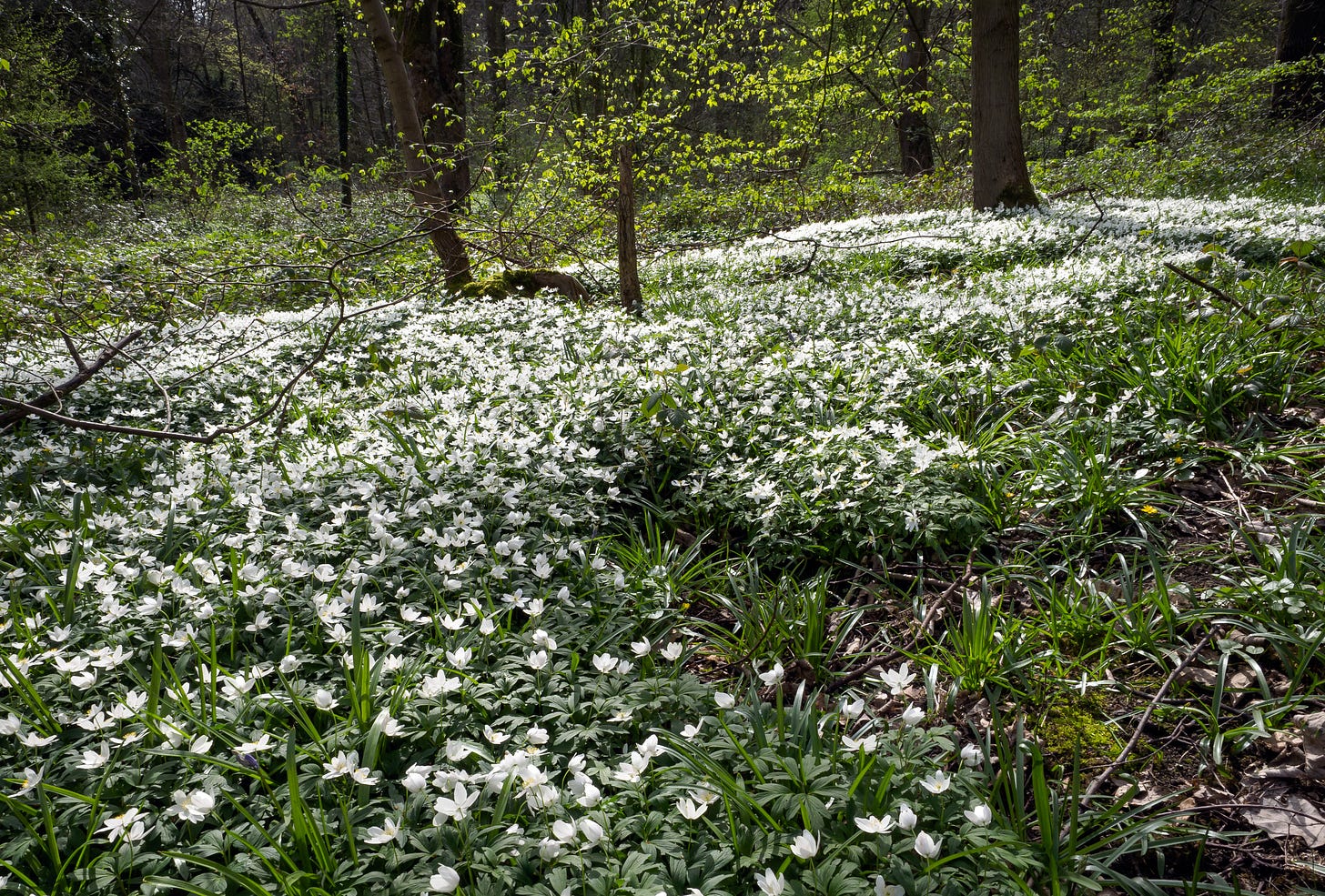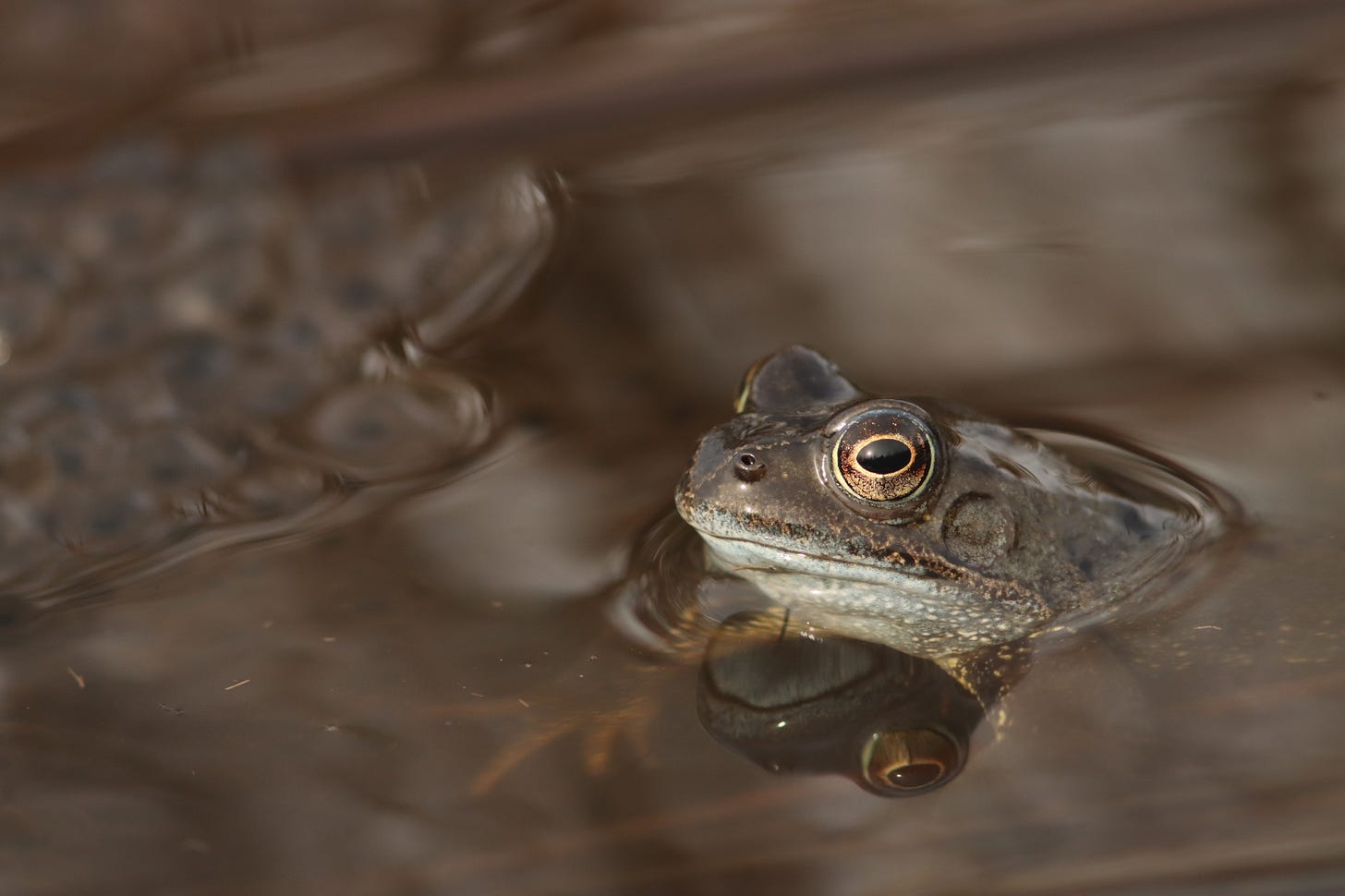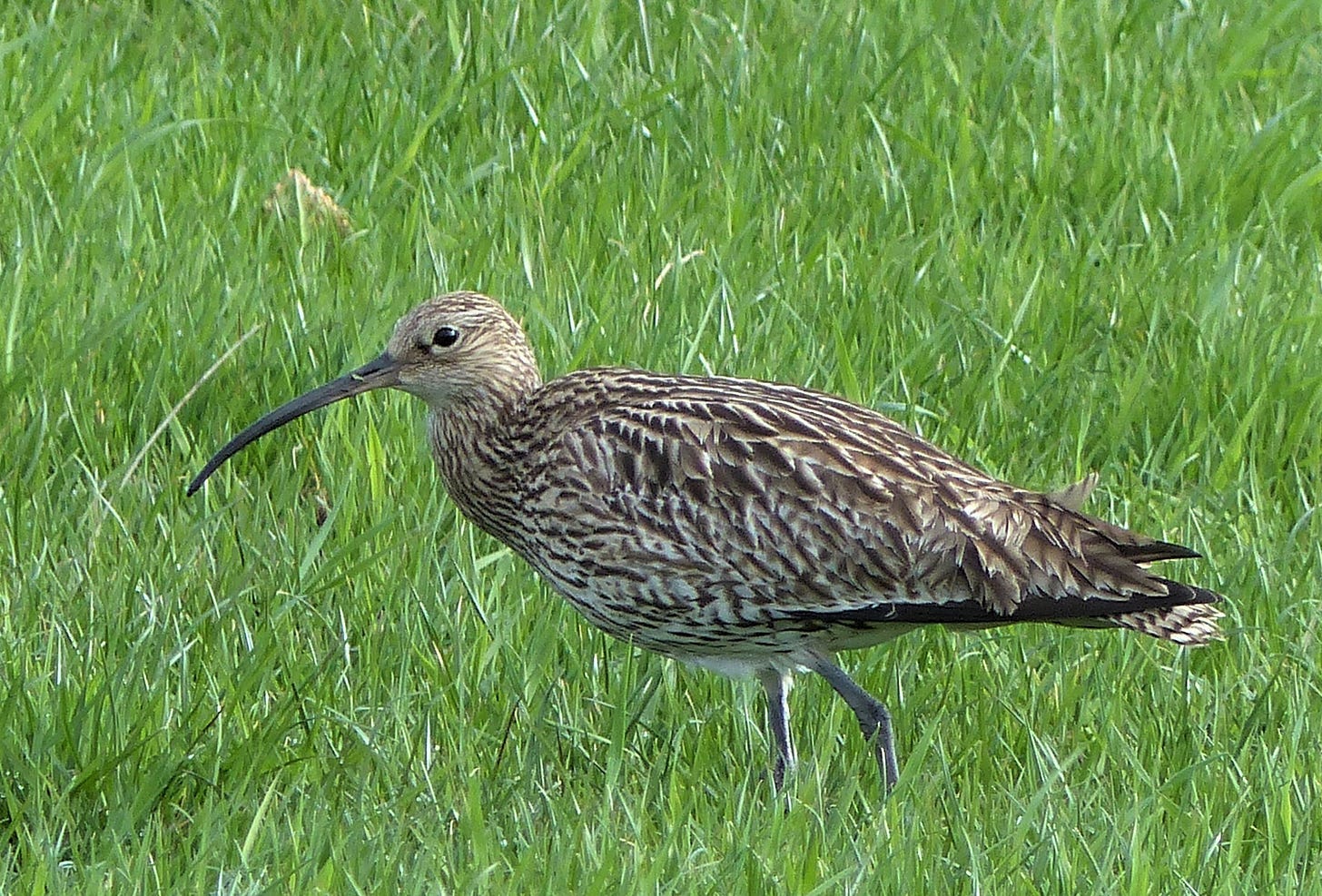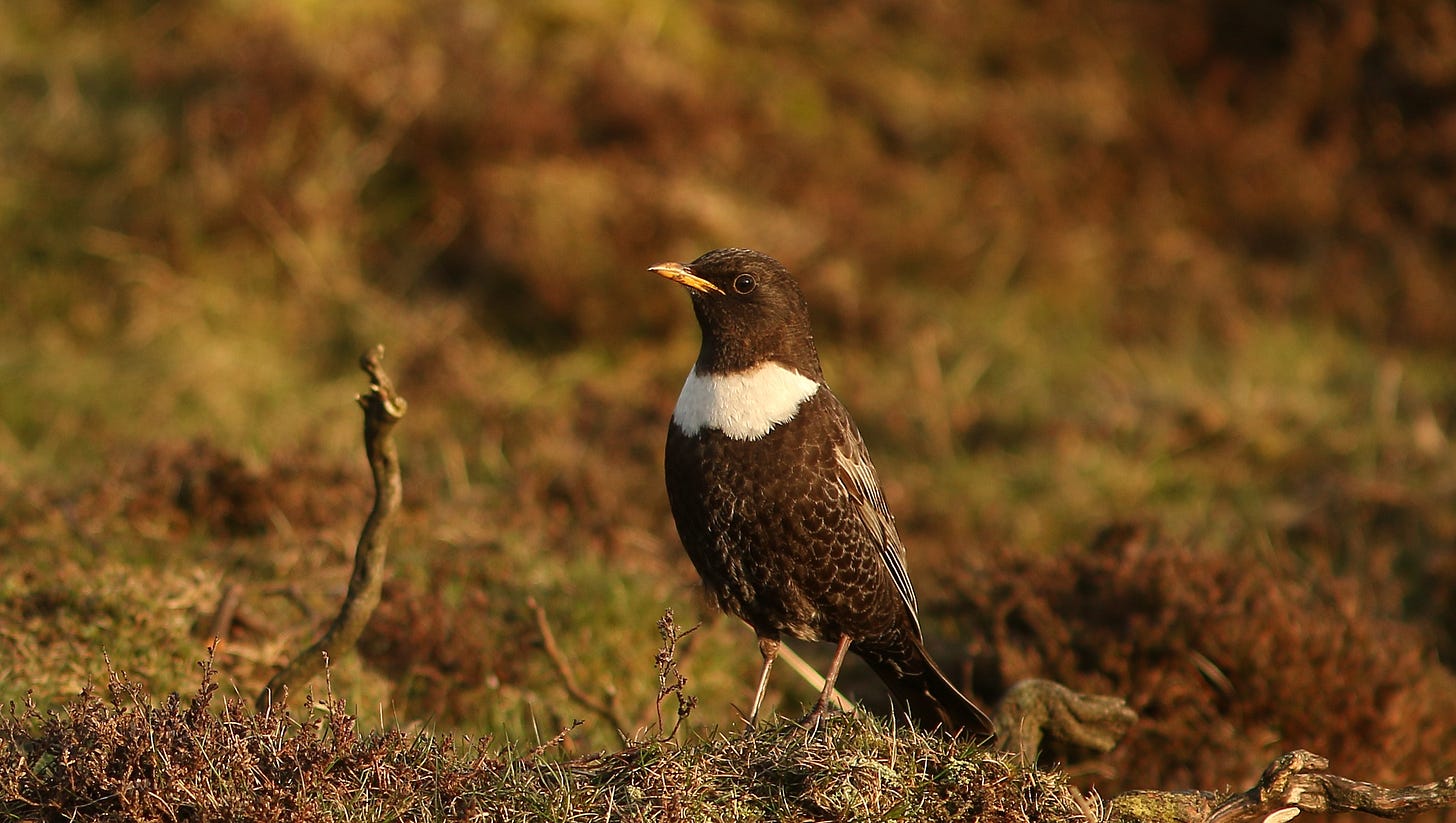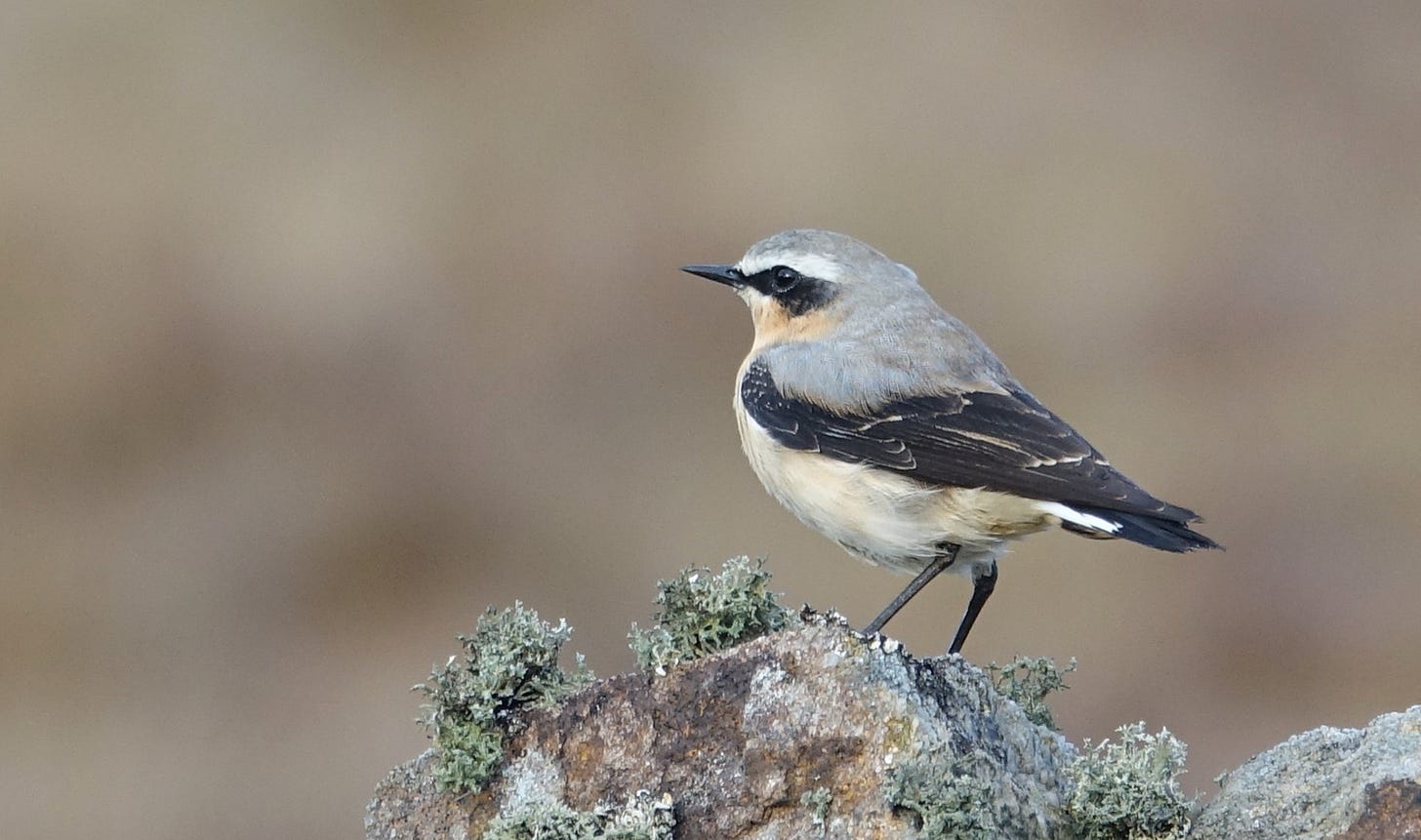What To Look For In March
Boxing hares, Sand Martins in Kelham Island, whooping swans, Grandmother's Nightcap, Curlew gangs, singing migrants and a bee impersonator (and lots more).
Our monthly guide to the wildlife and plants to look out for around the Outdoor City as spring begins to arrive. Thanks to members of Sorby Natural History Society, the RSPB Sheffield Group, Sheffield Bird Study Group and Sheffield Museums for their help, expertise and brilliant photos.
Brown Hare
It’s now Brown Hare mating season, so it’s a good time of year to see hares boxing. The boxing matches are generally females fighting off over-amorous males. Not quite a native species, it’s thought the Brown Hare was introduced to the UK for food, by the Romans, or perhaps even earlier. Dawn or dusk are good times to watch for Brown Hares in grassland, open farmland or woodland edges, but keep trees or hedges behind you, as they may bolt away if they see you against the open sky.
Whooper Swan
Will be returning northwards during March towards Iceland, with peak counts usually in the second half of the month. Watch for them in clear conditions, particularly on some of the larger reservoirs, with Strines and the Ladybower-Derwent-Howden chain regularly hosting large numbers. (Note a group of swans is a herd, not a flock).
Watch and listen for their whooping calls during the late morning or in the last hour before dark, when you might find up to 200 birds passing over, particularly through the east of Sheffield.
Chiffchaff
This delicate little warbler is our earliest migrant, arriving from North Africa in early March. Its very distinctive, repetitive song of “chiff chaff, chiff chaff, chiff chaff” is very easy to recognise and remember.
Sand Martins
May be arriving soon, on local lakes or rivers. These are long-haul migrants from South Africa, and skim low across the water, hawking for insects. Similar to the better-known House Martin, Sand Martins are brown with white underparts and have a small forked tail, with a twittering call. Several special nest boxes have been installed for them on the Upper Don, so look for them soon from Ball Street bridge near Kelham Island.
Nuthatch
This handsome woodland bird is often seen walking down the trunks of trees. It has a very loud whistling call of “hweet- hweet” and although it is present throughout the year, March is the month when it becomes a lot more vocal and active. Look for Nuthatches in any local woodland, and gardens too.
Waders and Woodpeckers
Common Sandpipers usually arrive at Redmires reservoirs during late March. Listen out for Great-spotted Woodpeckers drumming, Lapwings and Golden Plover on the moors. There’ll be birds gathering nesting material, and the early songs of male birds singing for mates and defending territory.
Insects
We’ll probably start seeing our first butterflies in March. Overwintering Brimstones and Orange Tips might be seen in flight during periods of bright sunshine, and possibly Large Red Damselflies too.
Dark-edged Bee-fly
Is a bee mimic. It’s the earliest of our bee flies to emerge, and tends to be in flight on sunny days in March, or basking on rocks and dead leaves. It looks like a bee (a deliberate ploy to fool would-be predators), but unlike bees, it only has two wings, which have a dark pattern on the leading edge. They’re common in parks and gardens, and use their long proboscis to feed on the nectar of a wide range of plants.
Wood Anemone
Wood Anemone is one of the earliest woodland flowers, usually appearing around the spring or vernal equinox (20th March this year).
Wood Anemone is recognised as an ancient woodland indicator, one of a series of plants that are often found in woods that date back to the year 1600 (or earlier), and once established Wood Anemone spreads very slowly, only forming large carpets in old, undisturbed woodlands.
You can also find it in some old meadows and in surprisingly exposed locations on the sides of Derbyshire’s limestone dales. Folks names for Wood Anemone include Windflower, Grandmother’s Nightcap, and Wooden Bettys. Look for them in any old woodland, like:
Woolley Wood, Wincobank (the drifts of white flowers can be glimpsed from the Sheffield to Barnsley train)
Ladies Spring Wood (near Dore Station)
Bitholmes Wood (between Wharncliffe Side and Deepcar)
Although Wood Anemone is seen as a harbinger of Spring, it is also associated with misfortune. If you pick its flowers, it’s said you might well be struck later by a lightning bolt.
Common Frogs and frogspawn
March is a good time to watch out for frogspawn. Common frogs will have been laying spawn throughout February, but March is when we should start to see it everywhere. We might see the first small tadpoles too.
Curlews
After returning in late February, these waders begin to congregate during the first half of March to the west of Sheffield. You may see up to 100 birds as flocks feed and roost at sites like Redmires Reservoirs, the lagoons near Stoney Middleton and in the fields around Midhopestones.
Over 200 were recorded locally last spring, before the flocks break up as birds move on to establish breeding territories on the upland pasture and moorlands around northern England. To protect Curlews and their chicks, dog owners are reminded to keep dogs on a lead on the tops as Curlews are prone to disturbance, and will fly up and away from their exposed eggs and chicks even if a dog (or human) is 50 metres or more away.
Ring Ouzel
The beginning of March sees the return of these relatives of the Blackbird to the gritstone edges of the Peak District, having spent winter in the Atlas Mountains of north-west Africa. Look for a dark brown bird like a Blackbird with a white bib, and and listen for the male's piping whistle at Stanage and Burbage, where they can often gather to feed on grassy areas in early March before the breeding seasons starts.
Wheatear
Said to be another harbinger of spring, after arriving here from central Africa, look for Wheatears on the gritstone edges and upland pasture of the Peak District, and in grassland across Sheffield, including horse paddocks, ploughed areas of farmland and even school playing fields.
The earliest sightings tend to be in the second week in March when the slate grey males are first to appear - often on their own at first, but later in small groups, where you might see a striking white behind (or "white-arse" to give them their old country name) as they fly ahead of you.





